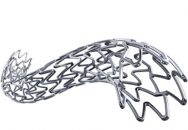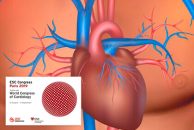There might come the time when we are finally able to leave nothing behind, at least in the context of primary PCI. The REVELATION study, soon to be published in J Am Coll Cardiol Intv, has shown that paclitaxel coated balloons resulted non inferior to drug eluting stents (DES) in terms of FFR (fractional flow…
DK CRUSH Is Still The Best Option
Courtesy of Dr. Carlos Fava. When it comes to severe unprotected left main distal bifurcation lesions, surgery continues to be the preferred treatment option. However, due to the growing number of patients that cannot receive surgery, left main PCI has significantly advanced, and though the strategy in this scenario remains controversial, double kissing crush stenting…
Thin, Very Thin, and Ultrathin Struts, with Permanent or Biodegradable Polymer… Which Is the Best Combination?
Results from the BIO-RESORT trial at three years, soon to be published in JACC Intv., show that, despite significant differences among stents as regards strut thickness and capability to reabsorb the polymer, there are no apparent safety or efficacy differences among devices. The aim of this study was to determine the three-year safety and efficacy…
STEMI in Coronary Dissections. When Should We Do It and What Are Its Outcomes?
Courtesy of Dr. Carlos Fava. Generally, coronary artery dissection (SCAD) is not very frequent in young women and presents better evolution with medical treatment. However, it is occasionally associated with ST segment elevation. In this scenario, PCI with stent implantation is quite challenging. The study looked at 4298 STEMI patients; 53 presented SCAD (1.23%). STEMI-SCAD…
The Most Read Articles of August in solaci website
1-FDA Expands TAVR Indication to Low-Risk Patients Both the self-expandable valve Evolut R and its direct competitor, balloon-expandable valve Sapien 3, received the authorization to be indicated for low-risk patients in a long-awaited announcement made on August 16th, 2019. Read also HERE 2-Mechanisms of Post PCI Persistent Angina Angina persistence or recurrence after PCI can…
Is Complete Revascularization the Right Choice in Acute Myocardial Infarction with Multivessel Disease?
Courtesy of Dr. Carlos Fava. Primary coronary angioplasty has been the treatment of choice for acute myocardial infarction (MI) for many years, but such strategy is associated with nonculprit lesions in a large group of patients. While it has been proven that nonculprit-lesion revascularization offers better outcomes, the groups that would benefit from it are…
Theoretical Advantages Translated into Worst Clinical Outcomes: Synergy vs. Xience
New data from a real-world registry soon to be published in J Am Coll Cardiol Intv suggest that Synergy (a thin-strut everolimus-eluting stent with a biodegradable polymer) is associated with a higher risk of acute stent thrombosis when compared with classic Xience (a thicker-strut everolimus-eluting stent with a durable polymer). At 12 months, there was…
ESC 2019 | CLARIFY: Symptoms Predict Risk Only in Patients with Prior MI
The 5-year follow up of patients with chronic stable angina (or as the guidelines currently call it “chronic coronary syndrome”) indicate the risk of cardiovascular death or non-fatal MI is quite low, but risk factor control is still fairly poor. This information comes from the CLARIFY study, presented at ESC 2019 and published simultaneously in…
ESC 2019 | Pure: Body Mass Index Shows Low Correlation with Cardiovascular Events
This population study has found all-cause mortality is lower the lower body mass index (BMI) is, but lower BMI is not necessarily better. In fact, the lowest mortality in this global analysis was found in patients with medium BMI. Other anthropometric measurements such as hip/waist ratio and strength/weight ratio are better predictors of events and…
ESC 2019 | SYNTAXES: Ten-Year Outcomes!
The SYNTAXES (SYNTAX Extended Survival) was presented at ESC 2019 with somewhat unexpected results in favor of PCI. This is why the SYNTAX continues to be one of the best studies interventional cardiologists can rely on. The original SYNTAX tested mortality (primary end point) with PCI vs. CABG in patients with multivessel and/or left main…
ESC 2019 | New European Guidelines on “Chronic Coronary Syndromes”
In Paris, during the European Society of Cardiology (ESC) Congress 2019 Scientific Sessions, new guidelines for the diagnosis and treatment of chronic coronary syndromes were presented. This document, simultaneously published in Euro Heart J, updates the 2013 guidelines on stable ischemic heart disease and takes out the word “stable” so as to emphasize that the…










